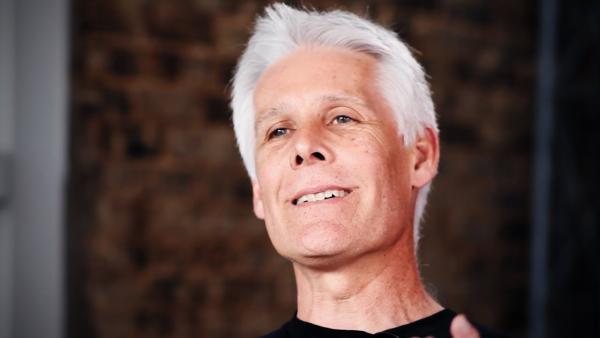
Designer, entrepreneur and imaginative advocate for a better world, John Bielenberg is recognized for innovative investigations into the practice and understanding of design and leadership in the “design for good” movement.
The thing that John Bielenberg designs best is designers.
He doesn’t think much of design as an end in itself, but rather sees its value in its impact on people, and the world.
And he has found a way to multiply that impact.
He was born in Germany, because that’s where his parents were. Dad in the U.S. Army, stationed in Regensburg as a theatrical designer—an early design influence.
Soon Bielenberg was thrown out of the strictly formal Swiss/Bauhaus design department at Rochester Institute of Technology, despite getting a standing ovation from the other students in his class.
He got his design degree at Binghamton University in 1980.
He’s always had a tendency to do something he calls “thinking wrong,” which means, “Whatever you’re supposed to think, or make, or say—do your best to do the opposite, and see where it takes you.”
In late-1980s San Francisco, he built a successful design firm for himself, added partners, and renamed it C2. While serving real clients in real companies with collaborators Greg Galle and myself, and doing all the things you’d expect of a successful designer with real clients, he managed to invent an imaginary one.
He’d decided that a lot of what corporate clients were doing was absurd.
So in 1991 he invented an even more absurd imaginary client.
He even gave it an absurd name: Virtual Telemetrix, Inc.
He designed a logo for his imaginary client, then wrote speeches and catalogs and made uniforms and videos and even created an annual report for it.
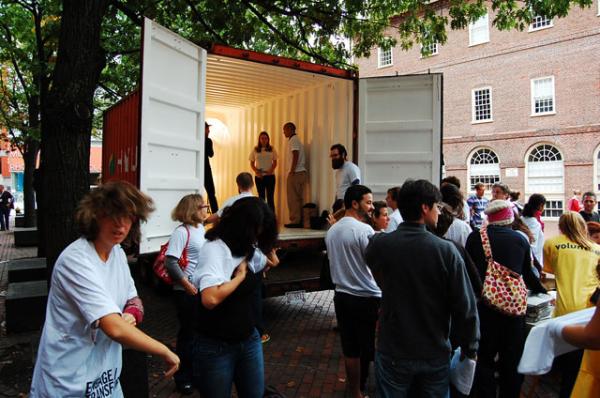
BlankLab at the Better World by Design Conference at the Rhode Island School of Design, 2009 Project M South team.
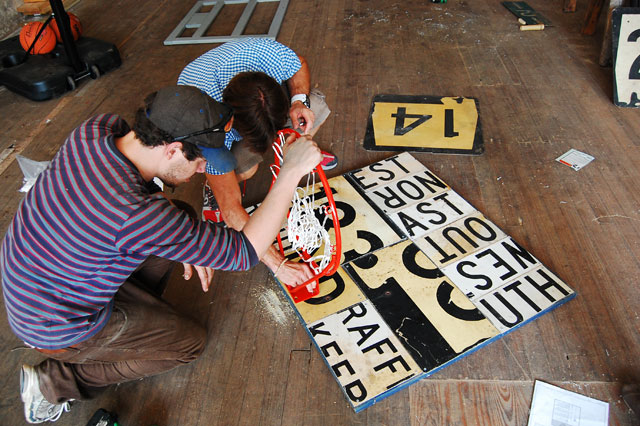
Common Hoops enterprise in Greensboro, Alabama, 2011 Project M.
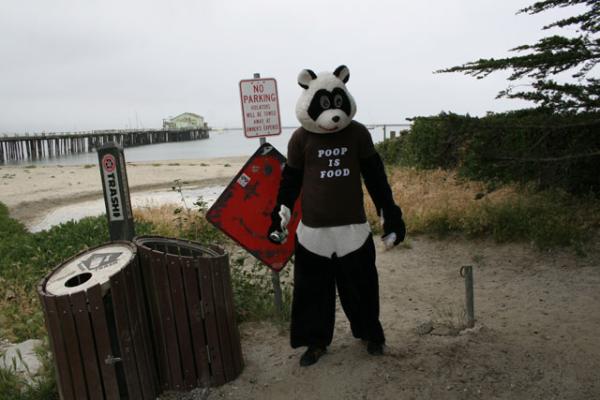
Rebranding sustainability with Greeny the Bear, 2010 Project M alumni.
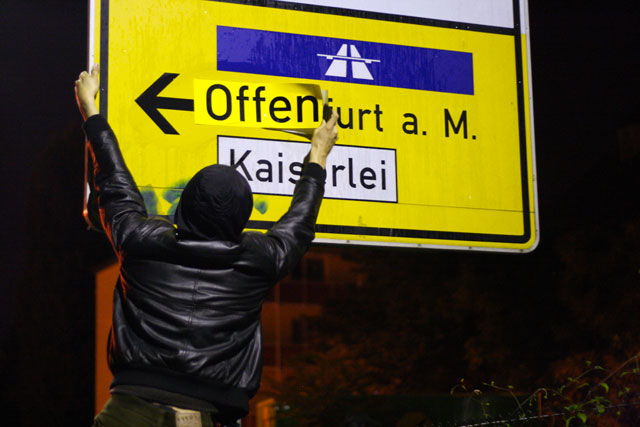
Hacking German signs for Frankfurt and Offenbach to read “Offenfurt” and “Frankenbach,” 2010 Project M Frankfurt team.
Then he printed up stock certificates and said he was going to take this imaginary company public.
Whereupon, all hell broke loose: people signed up for the stock offering, and it all ended up as a very real, very tongue-in-cheek exhibition at the San Francisco Museum of Modern Art in 2000.
He abandoned his successful design firm in San Francisco in 2001 to follow his family to the coast of Maine.
And since 1991, he’s found the time and patience to instruct and inspire students through teaching and advising at California College of the Arts. He also found the time to serve on AIGA’s national board, and was recognized as an AIGA Fellow by the Maine chapter.
Somewhere along the way, he ran into a big, burly, bearded guy named Samuel Mockbee, who demonstrated that young architects with passion and no money could accomplish amazing things in the bleakest of places.
“Proceed and be bold,” said Mockbee.
Mockbee died before his time, but not before providing Bielenberg with the inspiration that changed his life.
See, Bielenberg always felt passionately that the design profession was capable of solving bigger, more important problems than it had. Too many designers were being trained to make beautiful things like corporate logos, ads, websites, brochures, posters, packages and all that stuff—but nobody trained them to take social responsibility and to use design skills to make an impact on people and communities and causes.
He wanted to do that.
But how?
Bielenberg decided he could light a fire under young designers by putting them in real situations in the real world, where real people had real problems. And by shifting responsibility for defining those problems from the teacher to the student.
In 2003, he invented a movement and a program called Project M.
He invited young designers to join him in making design matter in the areas that mattered: conservation, social responsibility and social change.
And they did, in places as far flung as Alabama, Iceland, Germany, Costa Rica, Maryland, Michigan and Maine.
In each place, Bielenberg “parachuted” his team in, and asked them to be fearless and figure out what real problems they could solve ingeniously and what they could actually accomplish in a few weeks.
With no money.
In Alabama, they found ways to raise funds to bring clean water to homes in a rural county and they started PieLab, a thriving, socially revolutionary restaurant in a dilapidated storefront.
In Costa Rica, they found ways to support the forest conservation movement.
In Detroit, they founded a community gathering place in an abandoned inner-city lot.
In Iceland, they worked to foster a financial revolution.
Project M is a social success, but not so much a financial one.
Bielenberg forgot to charge tuition.
So he’s recently co-founded a new, very similar, for-profit organization called Future with Greg Galle to help corporations, foundations and other institutions develop ingenious solutions to their most daunting challenges and problems.
He’s shifting responsibility for defining their problems from the boss to the worker.
He’s turning corporate managers into active problem solvers.
He’s challenging them to stretch their imaginations to take on bigger, more important problems than they’ve ever undertaken before.
With surprisingly positive results.
He’s turning people into designers.
He’s turning designers into problem solvers.
John Bielenberg is a designer of designers.